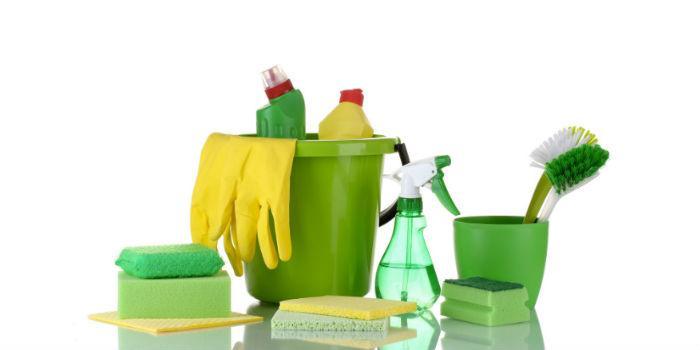 A new dynamic in terms of cleaning is taking more and more strength, it is called Green Cleaning 3.0. (Green Cleaning 3.0). Learn more about this movement here.
A new dynamic in terms of cleaning is taking more and more strength, it is called Green Cleaning 3.0. (Green Cleaning 3.0). Learn more about this movement here.
In a sense, we are now starting the Green Cleaning 3.0 movement. (Green Cleaning 3.0). The Green Cleaning 1.0 movement began in the mid-90s when after an executive order by U.S. President Bill Clinton, federal offices and facilities were required to start using environmentally friendly cleaning tools and supplies when and where possible.
Clinton's order resulted in federal facilities transitioning to eco-friendly cleaning products, and since the federal government is a large buyer of cleaning supplies, manufacturers in the professional cleaning industry rushed to develop eco-friendly cleaning products with greater credibility.
The Green Cleaning 2.0 movement had its moment in the mid-2000s. That's when the demand for environmentally friendly cleaning products shifted to private industry. More and more facilities were seeking Leadership in Energy and Environmental Design (LEED) certification from the U.S. Suntentable Building Council. And they could earn LEED points by using eco-friendly cleaning products.
Today, buildings must have an eco-friendly cleaning strategy in order to be considered for LEED certification. Additionally, a greater number of facilities began to adopt green cleaning, including schools, health care centers, office buildings and hotels. The result was substantial growth in the green or ecological cleaning market.
The Green Cleaning 3.0 movement began to evolve in recent years. The use of environmentally friendly cleaning products has become a status quo, with more installations in dozens of industries choosing eco-friendly cleaning products first and only selecting a traditional product if there is no eco-friendly one or if the cost or performance is prohibitive. However, Green Cleaning 3.0 has brought with it a number of challenges. How:
• Stay up to date. In general, cleaning contractors and facility managers are now interested in knowing what eco-friendly tools, chemicals, and cleaning equipment are available today that weren't available a few years ago. Their goal is to see what has happened, what new products there are, whether they perform better and/or are more cost-effective compared to those they first adopted when moving to an eco-friendly cleaning program.
• Focus on sustainability. More and more cleaning professionals are looking for ways to reduce waste, recycle and minimize the use of natural resources. In some cases, they do so because they believe it is the morally right thing to do. In other situations, it is a requirement to have sustainability measures from large buyers of your products and services.
•Eliminate repeated products. Traditionally, contractors and facility managers have selected a variety of chemicals and green cleaning products, each designed to perform a specific task. However, they are realizing that some of these products (or recently introduced products) can be used for multiple purposes. To reduce costs, reduce waste, minimize training requirements, and expedite orders, contractors and managers want to minimize the number of products they select and eliminate those that are no longer needed.
•Cleaning with cold water. End users are aware that dilution in cold water is often recommended in green cleaning programs, and also fits their goals to be more sustainable and use less energy. However, they need more information about the uses and best practices of these products before they can make educated purchasing decisions.
•Remove ready-to-use products (PLU). Although PLUs are convenient, contractors and building managers are opting to eliminate ready-to-use cleaning products, preferring to select chemicals in larger, say 5-gallon containers. While buying bigger helps promote sustainability, it can also help achieve significant cost savings. Cleaning chemicals more concentrated in large presentations tend to last longer.
A look beyond chemicals. Many cleaning professionals are researching cleaning equipment and procedures that do not require the use of either eco-friendly or traditional chemicals. Sometimes called chemical-free cleaning, this involves the use of equipment or products that work with engineered water. In certain situations, this may be the latest breakthrough in eco-friendly cleaning.
Data collection
Although there is considerable concern today among distributors in the hygienic-sanitary industry, about the emergence of online retailers entering the professional cleaning products industry, Green Cleaning 3.0 can counteract much of the negative impact that can come with these big changes. This is because customers will turn to cleaning distributors as guides to help them on the road to the next level of green cleaning.
The problem for distributors, however, is keeping up to date on the latest innovations and products in eco-friendly cleaning. This can be challenging, especially now that many manufacturers are introducing their third generation of environmentally friendly products. Data collection processes, such as web-based analytical tools, can help. With these tools, the distributor enters into the system data from an inventory of the eco-friendly (or traditional) cleaning products currently used in a facility and then the system suggests newer, more cost-effective, or better-performing alternatives.
For example, one of our customers, a large healthcare facility, focused on waste reduction and turned to us to look for product alternatives that would help them in this task. We suggest swapping the current 60-pound disposable protectors for 30-pound protectors, as a recommendation gleaned from one of these web-based tools, the customer could reduce waste and promote sustainability, and could also save.
We can see that Green Cleaning 1.0 and 2.0 laid the foundation for widespread green cleaning. The goals of these eco-friendly cleaning versions were primarily to test end customers that environmentally friendly products could be effective in terms of cost and performance. Green Cleaning 3.0 is a much more advanced stage. Cleaning professionals have more questions and want more answers about those environmentally friendly cleaning products.
Distributors are the people they will turn to for help with these questions, and the most astute distributor with technologies will be the ones with the right answers.
By Brian Peters, who is the president and CEO of Peters Supply, a distributor of facility maintenance, industrial packaging, food services, security, office supplies and solutions based in Elmira, New York.


























Leave your comment